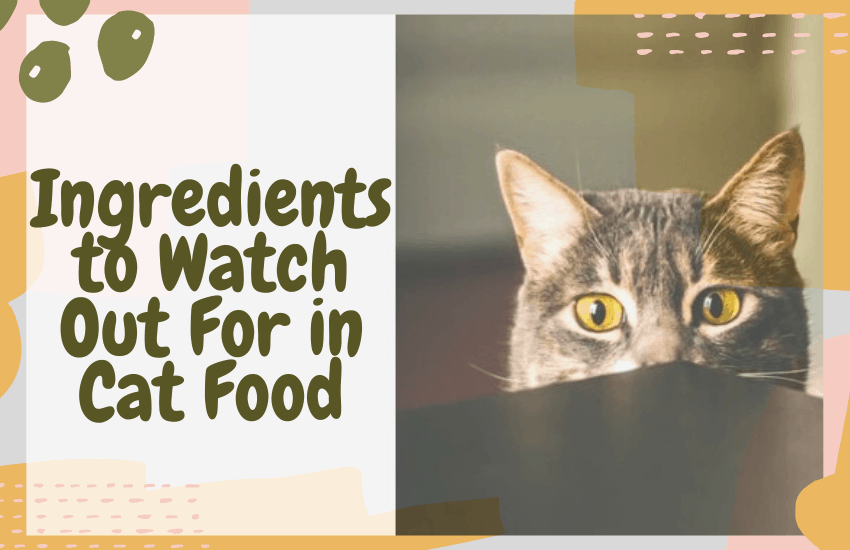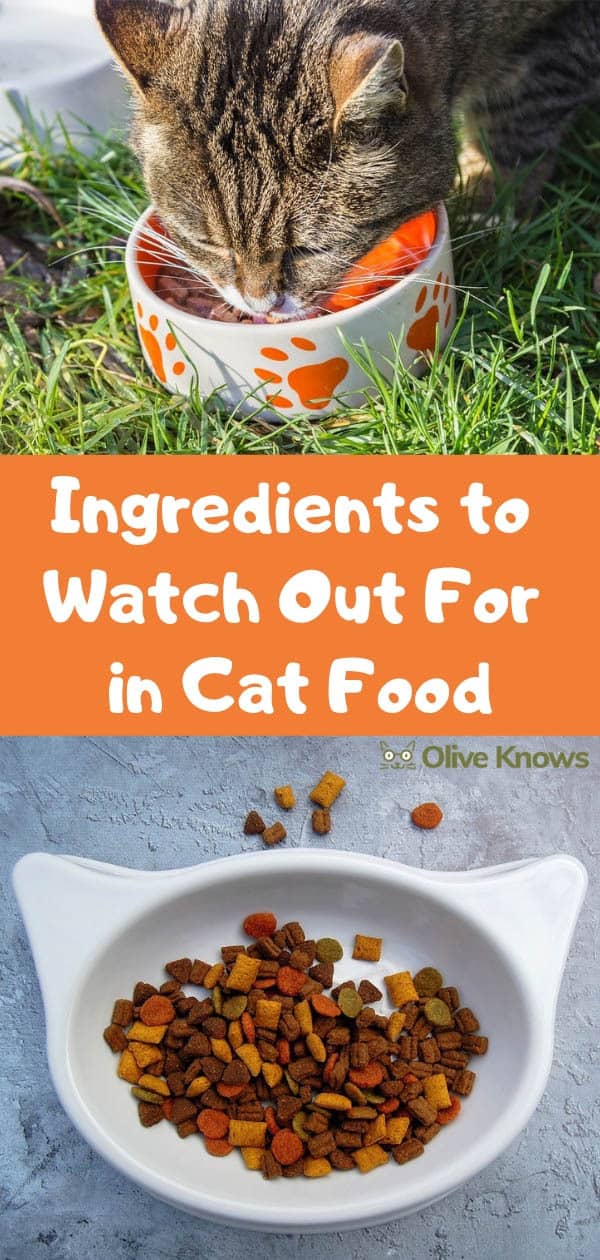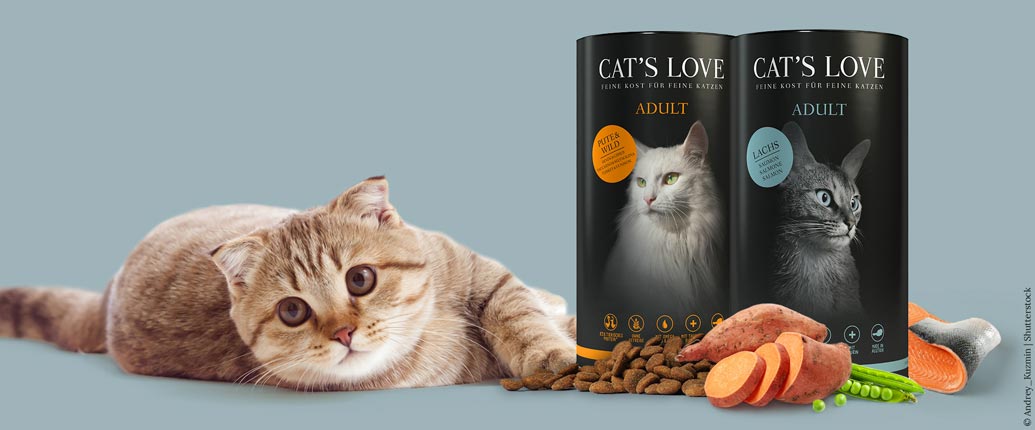
Picking a nutritious and healthy food for your pal might seem a daunting task at first, but it gets quite easy once you know what ingredients to avoid and which ones to go for. Here’s what to pick and what to run away from.

Table of Contents
Ingredients to Avoid
Corn
Even without the high-carb content corn is less than ideal for cats. In the wild, cats only consume grains through the digest of their prey. Felines are not meant to process grains so feeding them a diet high in grains is hard on their digestion. Unfortunately, corn is the most popular filler ingredient in cat food. It’s a cheap source of satiety and what separates low-quality foods from good ones is the presence of corn at the top of the ingredient list. Another popular no-no is corn syrup – this stuff is just bad.
Soy
Soy is a hard-to-digest grain which shouldn’t find its way into cat food. Soy is a staple food especially in Asian cultures, but its safety is still disputed. Like corn, soy is a cheap filler, though this one is used to boost the protein count in cat food. Soy protein is not a complete protein which makes it inadequate for cats. Furthermore, there has been research that found links between soy and thyroid problems in cats. What’s more, soy is among the most genetically modified foods – a practice whose safety is still debated.
Wheat
Wheat fills your cat fast at the expense of taxing her digestive system with carbs that quickly leave her hungry again. Besides, wheat is a known allergen. When shopping for cat food do note that grain-free doesn’t always mean that the diet is low-carb or better than the formulas that do contain grains. Some manufacturers get quite creative when trying to save money and substitute grains with other ingredients that are equally unnecessary and hard for your cat to digest.
Potato
There’s nothing wrong with having potatoes in cat food provided that they are used for their benefits – being rich in micronutrients. The problem is when potatoes find their way as a filler. Potatoes can be quite filling due to their high carb content, but they do not offer much nutrition to cats. Avoid cat formulas that list potatoes high on the ingredient list. Do note that some manufacturers might artificially, albeit legally, “lower” the potato content by doing what’s called “splitting.” Splitting refers to the practice of listing ingredients by their building compounds to decrease their weight.
Unspecified Meat or Meat Meal
To live a healthy and happy life cats need protein from meat, but not all meat in cat food is equal. Beware of manufacturers who vaguely list meat or meat meal without specifying what animal does the meat come from. Another thing to consider is what actually meat meal is. Meat meal is often made of by-products, cooked on high heat and ground into powder. While it is a viable source of nutrition, it shouldn’t come as the top ingredient – in high-quality food this space (and the ones after that) is reserved for identified whole meats.
Propylene Glycol
The FDA has labeled propylene glycol as “generally recognized as safe.” Yet this ingredient has stirred quite the controversy recently. It is an additive used in a variety of industries including pet food, pharmaceutics, and chemistry. In pet food, the ingredient is added to preserve moisture and keep the food stable for longer, but as of recently, the FDA has prohibited its use in cat food. In fact, there have been numerous cat food recalls in recent years due to the presence of propylene glycol.
Preservatives
Preservatives are not harmful per se, but it all depends on what type manufacturers use. The cheap stuff is likely to contain artificial preservatives such as BHA, BHB, ethoxyquin and potassium sorbate. All of them are surrounded by controversy with some studies finding these artificial preservatives to be cancer agents. Organic preservatives keep food safe for a shorter time, but they are not toxic to the animal. The most common natural preservatives found in cat food are Vitamins E and C, however, they usually find a place in premium formulas.
Butylated-hydroxyanisole (BHA)
BHA is an artificial antioxidant (preservative) used to keep pet food from becoming rancid. The nutrient that is most susceptible to oxidation is fat meaning that the presence of BHA might suggest high-fat percentage in the formula. While having an antioxidant in your cat’s food might sound harmless, BHA has actually been labeled by the U.S. National Institutes of Health as a possible human carcinogen. Yet BHA is still used by some pet food manufacturers. With plenty of alternative and natural preservatives available there’s no reason to purchase food that contains BHA.
Gum (guar, xanthan, agar)
Gum is used in the food industry as a thickening agent. Some studies have shown gum to be an irritant to the digestive system of cats. Furthermore, gum may affect the organism’s ability to digest and absorb protein and fat. Yet, as is often the case with clinical trials, studies report contradictory conclusions. Some find that guar and xanthan gum are safe for consumption while others point to the contrary. In any case, it’s better to avoid ingredients that serve nothing more than making the food look pretty.
Artificial Colors and Flavors
If the formula is made of high-quality, balanced and nutritious ingredients your cat will eat it no matter the color; and the taste will be naturally great. If a manufacturer needs to use cheap artificial flavors to make their food eatable, then something’s not right. High-quality diets get their appetizing color and flavor from organic ingredients such as fruits and vegetables, not from caramel coloring (one to run away from). Colors and flavors are non-nutritious, harmful, unnecessary and a sign that the formula is lacking where it shouldn’t.
Ingredients Cats Love

Poultry
Poultry is what cats would eat in the wild, so cat food made from poultry is closest to a natural diet for your pal. When choosing cat food made from or with poultry check the label and pick a formula that lists whole meat (not by-products and not meat meal) as the first ingredient.
In addition, choose formulas made from lean poultry meats like Acana’s Regionals Wild Prairie or Merrick’s Limited Ingredient Real Turkey Recipe (check out the best limited ingredient food options here) Duck meat is another popular option, but it comes with higher fat content. Providing your cat with some variety is great but make sure to consider all nutrients.
Game
Game meat is a popular option for premium cat foods. However, feeding your cat such a diet comes with some pros and cons. On the negative side, game meat is expensive and doesn’t provide any significant nutritional advantage over “ordinary” meats such as poultry and pork/beef.
On the plus side, game meat is usually part of higher-quality formulas, provides some variety for your pal and tends to be cleaner in that game animals don’t feed on GMO feed.
Fish
Fish is another type of meat that is part of cats’ natural diet. It’s a great source of nutrients for your pal, and there are plenty of formulas that contain one or several types of fish. When picking a formula made with fish or seafood look for labels that certify the source of the ingredients.
Fish from uncertified hatcheries can be dangerously full of mercury, so pick cat food that uses fish from monitored hatcheries or caught in the wild like Acana’s Pacifica or Orijen’s Six Fish. Also, while canned tuna is a tasty treat for your pal, don’t let your cat indulge in it as it contains high levels of mercury and sodium.
Peas
Peas are getting more common in pet food as a substitute for grains. Pet owners are getting more vocal about wanting grain-free options, yet manufacturers still need to use plant fillers to keep costs and prices down.
At the moment, peas provide a middle ground. It is not as bad for cats as are wheat and corn and at the same time, it provides filling carbs. When picking cat food look at the label to make sure that peas are not too high on the ingredient list as too much of it will be hard on your cat’s digestive system.
Potatoes
We did include potatoes in the ingredients to avoid but note that we said to avoid them if they appear high on the ingredient list. Generally, potatoes are not an ingredient to look for when picking cat food. However, we included them in this section as a better source of carbs than grains in medium-range diets.
The formulas that are free of grains and potatoes are on the premium side and not for everyone’s pocket. While carbs are non-essential for cats, they are still a viable source of energy especially if your cat is active.
Oats
Oats contain protein, antioxidants and other micronutrients that can help your cat to thrive. Fiber, which oats are rich in, is an important part of a cat’s diet, provided that it is consumed at a reasonable amount.
As with other plant-based ingredients, oats need to be far on the ingredient list. As high as they are in protein, they are also rich in carbs which are fattening and non-nutritious to cats.
Besides, the protein found in plants is not the type that cats need to thrive and survive. Health Extension’s Chicken & Brown Rice Recipe contains oatmeal as the fourth ingredient which is fine given its short-ingredient formula.
Fruits and Vegetables
You won’t see a cat picking blueberries, but fruits and vegetables are a necessary part of a cat’s diet. They provide vitamins and minerals that take part in plenty of bodily functions – from keeping the brain sharp to making your cat’s coat shiny and healthy.
Also, fruits and veggies are organic colorants and flavors. When picking cat food look for formulas that list fruits and vegetables but ones that have a reason to be there such as blueberries, carrots, and squash.
Omega 3 and 6
The Omega fats play a vital role in your cat’s health. Their use is most noticeable in keeping your pal’s coat and skin healthy but also in keeping her cardiovascular system in check.
The richest source of Omega fats is wild sea fish, but if you are looking for a non-fish formula, you can find ones with added Omega fats.
They are especially important for kittens and elderly cats who need an extra boost to keep their heart and coat healthy. The Ziwi Peak Mackerel and Lamb is a great option that contains Omega fats.
Vitamins and Minerals
Some cats have specific needs when it comes to vitamins and minerals. Kittens and elderly cats and those suffering from some diseases have a higher or lower need for some micronutrients. Hence, if your cat fits one of these groups you might need to look for formulas that have an adequate amount of minerals or vitamins.
For example, cats that suffer from kidney disease will need a formula that’s lower in protein and phosphorus. If your cat requires a special diet, your vet will advise you on the right choice.
Specific Diets
Choosing the correct food for your domesticated feline depends on a variety of factors relating to her lifestyle. Is she long-haired and prone to coughing up hairballs? Is she on the lazier side and putting on weight? Perhaps she suffers from a sensitive stomach?
All of these conditions might call for a special formula. Note though that not all specialized cat formulas are created equal. Some of them are nothing more than a marketing gimmick with ingredients not differing much from “ordinary” diets. If you think that your cat needs a specialized formula, consult with your vet before taking action.
Wrap-up
Look for specified meat as primary ingredients, healthy fruits and vegetables, and consider your cat’s lifestyle. As of things to avoid, unspecified meat, byproducts and meat meals as primary ingredients, grains (especially corn and wheat), and anything artificial.
Continue reading:
The Best Limited Ingredient Cat Food Options in 2022
The Honest Kitchen Grain-Free Chicken Recipe Dehydrated Cat Food Review

